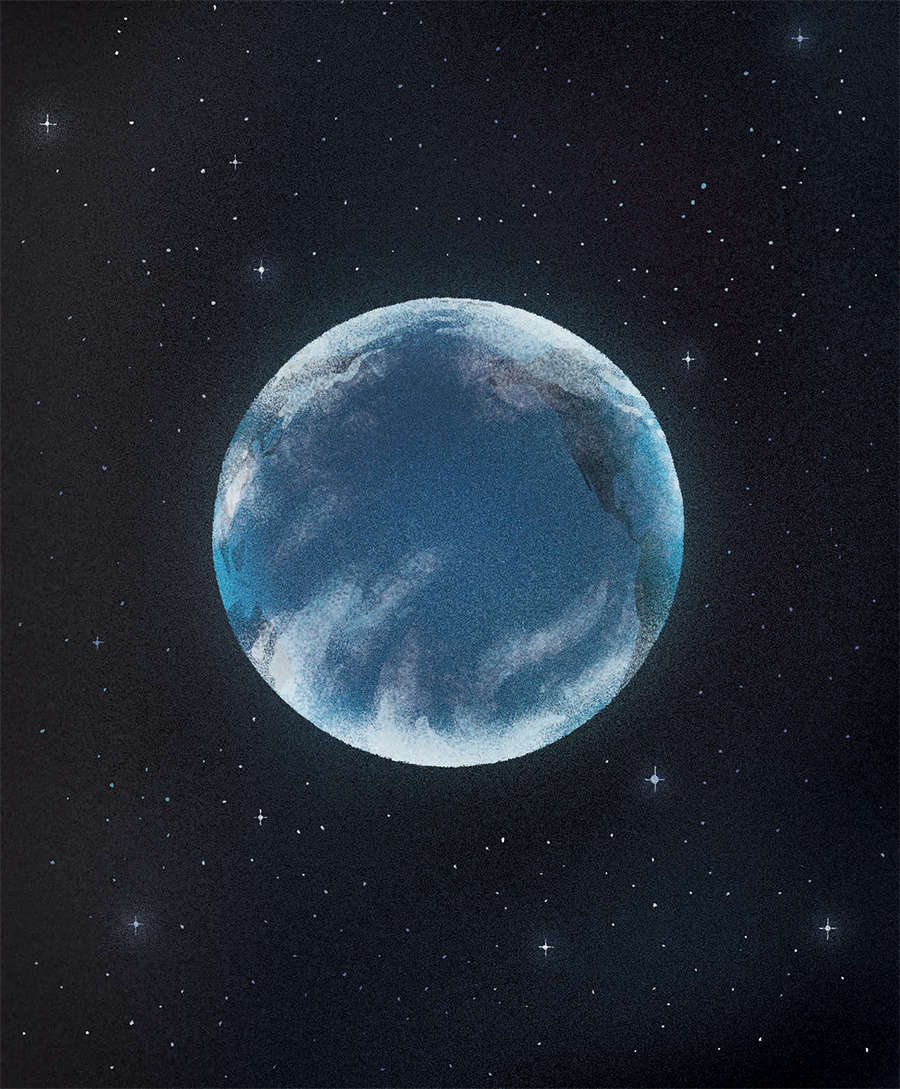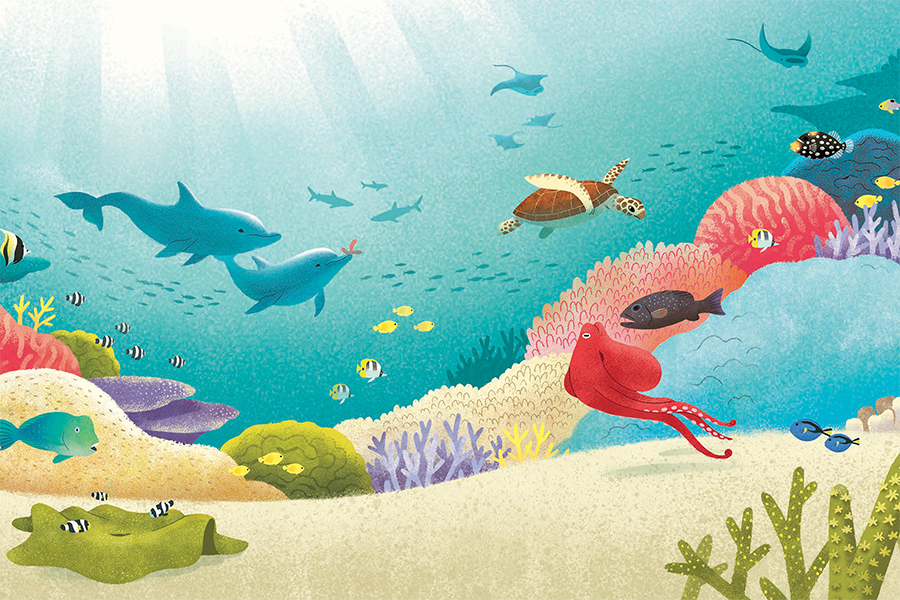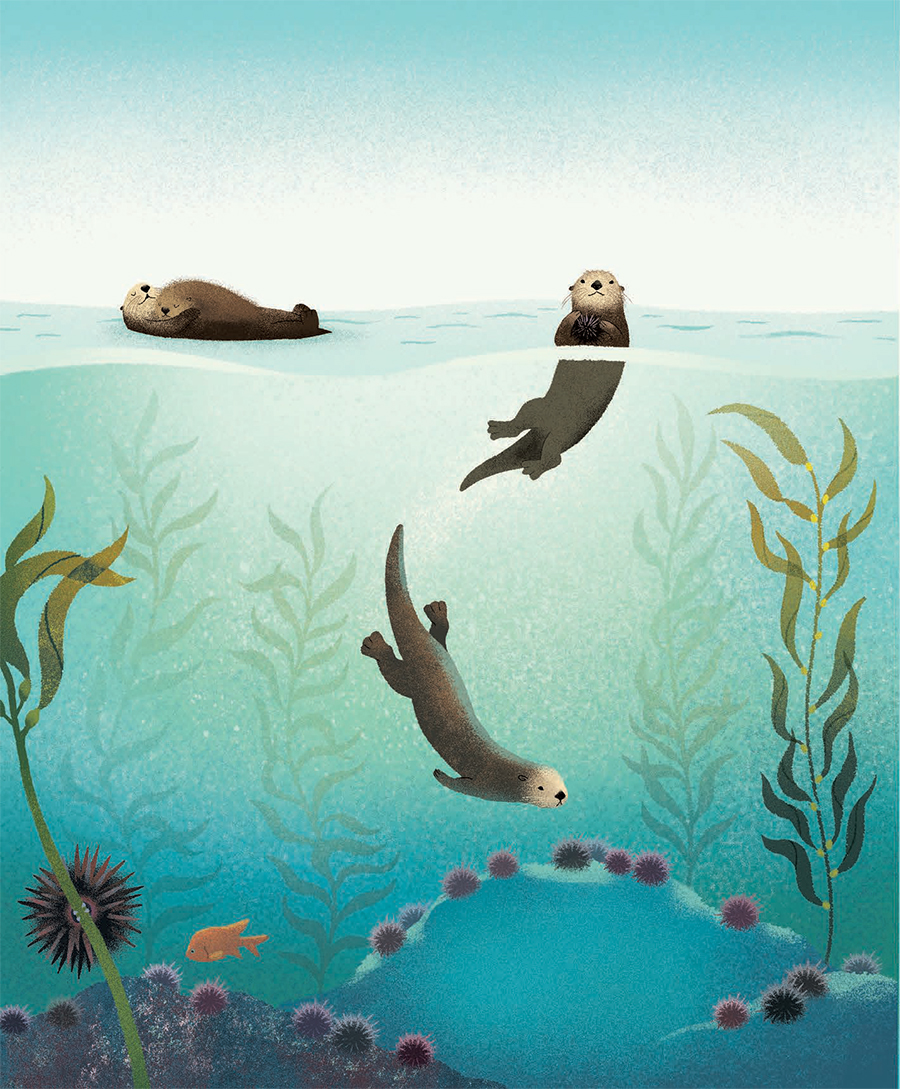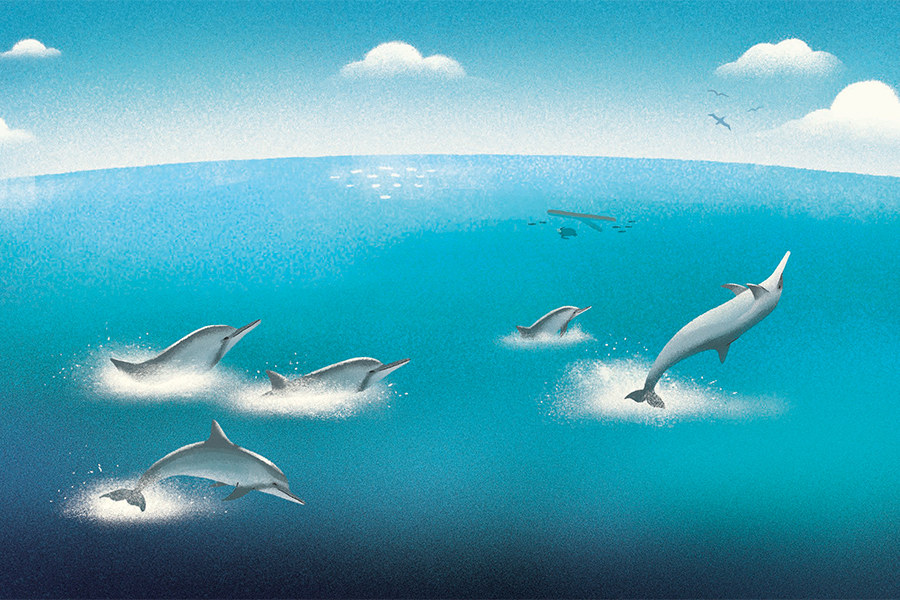- Home |
- Search Results |
- 15 fascinating facts about the ocean
In Blue Planet II by Leisa Stewart-Sharpe and Emily Dove, you can learn all about our least explored habitat and what you can do to protect it. Here are a few of our favourite facts about the ocean and the creatures that live in it.

1. Despite being far beyond the reach of the sun, the deep parts of the ocean are teeming with life. It’s so vast – bigger than all of Earth’s other habitats combined – that it has three zones; the twilight zone, the midnight zone and the hadal zone.
2. More people have ventured into the deepest reaches of space than the hadal zone, the deepest area of the ocean, which was named after the realm of Hades, the king of the underworld in Greek mythology.
3. The jelly-like siphonophores (sigh-fon-oh-fours) live in the deep and are giant trailing death nets. They have stinging tentacles that capture small crustaceans, and they’re the longest living thing on the planet. They can also grow to a whopping 40 metres long – that’s longer than a blue whale!

4. Coral reefs can be found in shallow tropical waters and are known as the ocean’s busiest habitats. They only cover 0.1% of the whole ocean, but a quarter of all marine species call coral reefs their home.
5. Our world’s reefs are home to more than a thousand hard and soft coral species. Hard corals are the backbone of any reef and include brain, staghorn, finger and cauliflower corals. But the reef also shimmers and sways with soft corals that look like plants and grasses, including tree coral, carnation coral, toadstool coral and sea fans.
6. The manta ray has a three-metre wingspan and seems to soar like a great bird with its wing-like fins. When it’s time for lunch, groups of manta ray spiral, creating a whirlpool. This is called ‘cyclone feeding’. On a good day, manta rays can eat 27 kilograms of plankton and fish (that’s as heavy as the average eight-year-old!).

7. Our green seas – kelp forests, seagrass meadows, salt marshes and mangrove forests – are some of the most crowded underwater worlds. Together they help to feed marine life across our Blue Planet.
8. Sea otters live in the North Pacific’s kelp forests and usually hunt alone. However, sometimes they come together in giant rafts to rest. Scientists have spotted over a thousand sea otters floating together, kelp tied around their bodies, so they’re anchored to the seabed whilst they float on their backs.
9. Just as big cats roam the African plains, tiger sharks patrol Australia’s seagrass meadows. Some can grow longer than a car, and they get their name from the grey stripes on their powerful bodies.

10. There are 18 types of penguin and nearly all of them live on the Earth’s coasts in the southern hemisphere (except for Galapagos penguins, which live just north of the Equator). These flightless birds have flippers instead of wings, so even though they’re clumsy on land, they’re speedy in the sea.
11. Echinoderm (e-kai-nuh-derm), Greek for spiky (echinos) skin (dermos), include sea stars, sea cucumbers, sea urchins and brittle stars. These coast-dwelling creatures have no heart, brain or eyes, but some have a mouth on their underside and a bottom on their topside!
12. The big blue is our marine desert and can seem empty. But it’s a place of constant movement with creatures such as the spinner dolphin, the sailfish and the blue shark using it as an oceanic highway.

13. As well as voyaging across the big blue, sperm whales rest in it. They rest in pods with their noses down and tails up – as if standing in the ocean. They can stay motionless like this for 15 minutes.
14. The whale shark is the biggest fish in the sea. It can transport up to 300 eggs in its belly before giving birth to live young.
15. Most of us know the four named oceans; the Pacific, the Atlantic, the Indian and the Arctic – and sometimes five for those who count the Southern Ocean – but functionally it is all one ocean. Everything is connected by the global ocean conveyor belt. In the same way that blood is pumped around our bodies, this network of deep currents works as the ocean’s circulatory system, slowly moving heat and food across the planet.